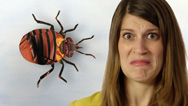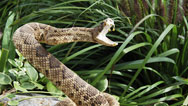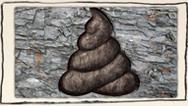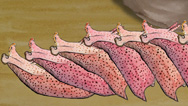Spiders and Erectile Dysfunction
- By Anna Rothschild
- Posted 08.20.15
- NOVA
Venom from the Brazilian wandering spider can give men a long-lasting, painful erection. Now scientists are hoping to use the venom to treat erectile dysfunction. Find out more in this episode of Gross Science.
Transcript
Spiders and Erectile Dysfunction
Posted: August 20, 2015
If you experience an erection lasting longer than four hours please contact your doctor....cause you might have been bitten by one of the most venomous spiders on the planet.
I’m Anna Rothschild, and this is Gross Science.
This is Phoneutria, more commonly known as the Brazilian wandering spider. Rather than spinning a web or building a nest, this highly aggressive arachnid constantly roams around in search of food. It’s found in parts of Central and South America, and the spider’s wandering often takes it right into people’s homes, where it finds a dark place to rest.
Phoneutria literally translates to “murderess” in ancient Greek. And for good reason. It’s one of the most venomous spiders on the planet. In fact, its venom was 18 times more potent than that of the Black Widow when it was tested in mice.
The venom is made up of a cocktail of toxins that disrupt the electrical signals your cells use to function. If you don’t have any anti-venom handy, Phoneutria’s bite can cause changes in heartbeat and blood pressure along with hypothermia, vertigo, blurred vision and convulsions. Most people don’t die because the dose of venom is too small. But there is one other horrifying side effect of note: intense and painful erections lasting up to five hours!
This phenomenon, known as “priapism” has scientists looking to use the spider venom to help men with erectile dysfunction. Current drugs on the market work by inhibiting signals that tell an erection to stop. But Brazilian researchers, in collaboration with The Medical College of Georgia, were able to isolate a compound from the venom that sets off a chemical chain reaction in the brain, actually stimulating arousal, instead.
Now, thinking of spider venom as medicine might sound strange, but venoms have a lot going for them when it comes to medical applications. They target very specific molecules, just like many modern drugs do. In fact, venoms from all these animals are either used or being researched as treatments for cancer, diabetes, heart disease, MS, pancreatitis, arthritis, and much more.
So if you get bitten by a spider on an amazon safari, thank her for her venom…and then get yourself to the nearest hospital.
Ew.
Credits
PRODUCTION CREDITS:
- Host, Animator, Editor
- Anna Rothschild
- Writer, DP, Sound
- Sam Stulin
- Many thanks to Dr. Kenia Pedrosa Nunes.
- Time For Suspense
- Music Provided by APM
IMAGES AND VIDEO
- Phoneutria Aggression
-
Courtesy Kevin Judge
https://www.youtube.com/watch?v=0H4VolRwMAw - Additional Video of Phoneutria
- Courtesy Rob Nelson
- One day (viagra tablet)
- Flickr/Felix E. Guerrero
- Aurelia aurita 1
- Wikimedia Commons/ Hans Hillewaert
- Crotalus horridus (1)
- Wikimedia Commons/ Tad Arensmeier
- Eastern Green Mamba 02
- Wikimedia Commons/ Danleo~commonswiki
- Gila Monster head
- Wikimedia Commons/ Jeff Servoss
- Desmodus rotundus feeding
- Wikimedia Commons/ Sandstein
- Leiurus quinquestriatus
- Flickr/Matt Reinbold
- Textile cone
- Wikimedia Commons/Richard Ling
- Sun Anemone
- Flickr/Roban Kramer
- Bee-apis
- Wikimedia Commons/ Maciej A. Czyzewski
- Brachypelma smithi 2009 G03
- Wikimedia Commons/ George Chernilevsky
SFX
- Cockroaches
-
Freesound/StateAardvark
(used with permission from author) - Squeak Pack/squeak_10
- Freesound/Corsica_S
- Scratch speed
- Freesound/raccoonanimator
- Dun dun dun
- Freesound/Simon Lacelle
- Produced by WGBH for PBS Digital Studios
IMAGE
- (main image: Wandering Spider)
- Courtesy Rob Nelson
Sources
Want more info?
Untamed Science video on bugs living homes in the Peruvian
Amazon:
http://bit.ly/1LhdqSb
Science With Tom's creepy crawly science rap:
http://bit.ly/1Lhdq4p
Research into using venom to treat erectile dysfunction:
http://bit.ly/1Lhd263
More on venom as medicine, from National Geographic:
http://bit.ly/1LhdpgR
Related Links
-

Gross Science
Bizarre stories from the slimy, smelly, creepy world of science.
-

Venom: Nature's Killer
Hunting down the most venomous animals to reveal their medical mysteries
-

Hidden Secrets of Poop Fossils
Fossilized poop, called coprolites, can reveal surprising secrets about the past.
-

Sea Slugs' Gigantic Neurons
The California brown sea hare has gigantic neurons. It also has a very strange way of reproducing.

